Behavior therapy
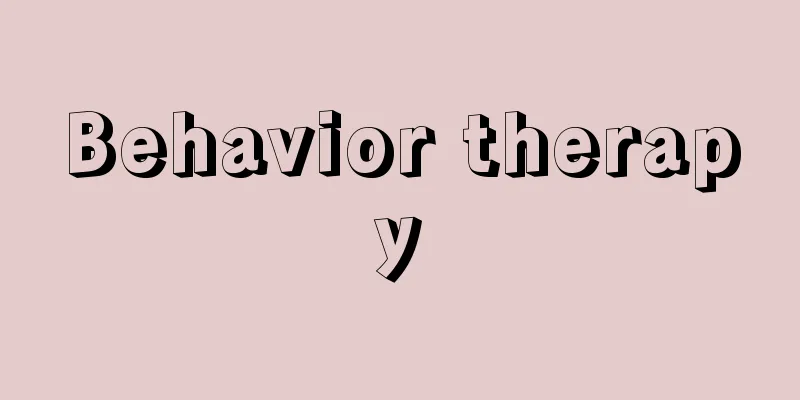
|
A type of psychotherapy. The name "behavior therapy" became popular with the publication of "Behavior Therapy and Neurosis" edited by H. J. Eysenck in 1960. It is a completely different approach from psychoanalysis, which assumes that the cause of neurosis is the unconscious and that treatment is achieved by releasing the complexes that lie there. Behavior therapy is based on behavioral theory and learning theory, but the goal of treatment is to change behavior. Rather than influencing the conscious or unconscious, the abnormal behavior itself is the subject of treatment. For example, in the case of treating a phobia of vehicles, rather than assuming a complex such as an unconscious death wish and trying to get the patient to understand it, the behavior of not being able to ride a vehicle itself is treated as the problem, and the procedure is to actually teach the patient to ride a vehicle. However, in order to realize such behavior itself, a procedure of manipulating conscious processes such as images may be used. In behavior therapy, abnormal behavior is considered to be acquired learning, not disposition. Therefore, treatment involves re-learning the behavior appropriately based on the principles of learning. Various treatment methods have been devised, mainly based on the idea of conditioning. A typical example is systematic desensitization, which is a method designed to eliminate fear and anxiety. For example, for a phobia of not being able to ride an express train, the degree of fear of things related to riding a train is first examined, and then they are arranged in order of fear. On the other hand, the patient is trained in relaxation techniques, mainly muscle relaxation, to relax and then imagine the least anxious stimulus. Once the patient is able to relax sufficiently even when imagining that stimulus, the method moves on to the next stimulus in the order, repeating the same procedure until the patient is able to relax sufficiently even when imagining the scene of riding a train. The opposite technique is flooding, which exposes the patient to the most frightening or least preferred stimulus from the beginning, placing them in a state where they cannot escape, and repeating this process. Conditioned inhibition therapy is a therapy applied to tic disorders, in which the patient is asked to actively blink their eyes for a certain period of time, and then rest for a certain period of time. This set is repeatedly trained. Aversion therapy is a method of administering an unpleasant stimulus when inappropriate behavior occurs; sometimes this can be an electric shock or the administration of a chemical substance. Operant conditioning is the opposite of aversion therapy, a method of promoting desirable behavior; in principle, if desirable behavior occurs, the patient is praised, given something they want, or made to do what they want. The above are well-known methods, but other therapies that have been developed include the self-control method, which involves controlling one's own behavior, and cognitive behavioral therapy, which uses not only behavior but also imagery. [Yutaka Haruki] "Cognitive Behavioral Therapy" by Yuji Sakano (1995, Nippon Hyoronsha) " Introduction to New Behavioral Therapy" by Teruko Miyashita and Masaru Menda (2007, Nakanishiya Publishing) [References] | |Source: Shogakukan Encyclopedia Nipponica About Encyclopedia Nipponica Information | Legend |
|
心理療法の一つ。1960年に出版されたH・J・アイゼンク編『行動療法と神経症』によって行動療法の名称が広まった。精神分析のように、神経症の原因に無意識を想定し、そこに潜むコンプレックスの解除によって治療が成り立つという考え方とはまったく異なった療法である。行動療法は行動理論と学習理論に立脚してなされるが、治療の目標は、まず行動の変容である。意識や無意識に働きかけるのではなく、異常行動そのものを治療の対象とする。たとえば、乗り物恐怖症の治療の場合、無意識的な死の願望というようなコンプレックスを想定し、患者にそれを理解させるといったような手続ではなく、乗り物に乗れないという行動そのものを問題とし、実際乗れるように指導していくという手続がとられる。ただし、このような行動そのものの実現のために、イメージなどの意識過程を操作するという手続を利用することもある。 行動療法では、異常行動は素質ではなく後天的に学習されたものであると考える。したがって、学習の原理によって、適切に学習し直すのが治療である。主として条件づけの考え方にたって、さまざまな治療法がくふうされている。 その代表的なものが系統的脱感作法で、主として恐怖や不安を解消するためにくふうされた方法である。たとえば急行電車に乗れないという恐怖症に対して、まず電車に乗ることにかかわる事項についての恐ろしさの程度を調べ、それを恐ろしさの順に並べる。一方で、患者に筋肉弛緩(しかん)を主とした弛緩法を訓練して、弛緩している状態にさせ、そこで一番不安のない刺激をイメージしてもらう。そして、その刺激をイメージしても十分弛緩していられる状態になったら、順序に従って次の刺激に移り、同じ手続を繰り返し、電車に乗る場面まで移行していき、そのイメージを描いても十分弛緩していられるようにしていく方法である。それとは逆の技法がフラッディング法で、患者を最初からもっとも恐ろしい、あるいは好まない刺激にさらして、逃避できない状態におき、これを繰り返す。条件性制止療法は、チック症などに適用される療法で、一定時間積極的に目をパチパチさせ、その後、一定時間休憩させる。このセットを繰り返し訓練する。嫌悪療法は、不適切な行動が生じたときに、不快な刺激を与える方法であり、不快な刺激として電気ショックや化学的物質を投与することもある。オペラント条件づけ法は、嫌悪療法とは逆に、好ましい行動を促進する方法で、原理的には、好ましい行動が生じたならば、ほめたり、ほしいものを与えたり、したいことをさせたりする療法である。以上がよく知られた方法であるが、そのほかに、自分で自分の行動をコントロールするセルフコントロール法や、行動だけでなくイメージを用いる認知的行動療法という意識も取り入れた療法が開発されている。 [春木 豊] 『坂野雄二著『認知行動療法』(1995・日本評論社)』▽『宮下照子・免田賢著『新行動療法入門』(2007・ナカニシヤ出版)』 [参照項目] | |出典 小学館 日本大百科全書(ニッポニカ)日本大百科全書(ニッポニカ)について 情報 | 凡例 |
<<: Joint Labor Union - Goudou Roso
>>: Huang Dao Kiln (English: Huáng dào yáo)
Recommend
Malcolm, Norman
Born June 11, 1911 in Selden, Kansas. [Died] Augus...
Acorn - Acorn
…Other forms of religious images are also seen, s...
Kinji Ushijima
1864-1926 Immigrants from the Meiji and Taisho pe...
Alcohol Intolerance
…The amount of alcohol consumed varies, but patho...
United Nations Disarmament Commission
The UN Disarmament Committee is a specialized agen...
Pharyngeal syphilis
...In most cases, it is a secondary infection fro...
Agrigentum - Agrigentum (English spelling)
The Latin name for Agrigento, a city in southwest...
Kimono-haori no Kosode - Kinukazukinokoso
...It was made in various ways, including weaving...
Pomacanthidae
…A general term for marine fishes of the family P...
FEM - FEM
《 finite element method 》⇒finite element method So...
Equality under the law
Based on the idea that all people are born equal,...
Luminous paint - Yakoto Ryo
Also known as luminous paint. Paint that emits flu...
Stridulating organ
The sound-producing organ of insects consists of a...
Higashiyama Culture
While the culture during the reign of Ashikaga Yo...
Apres [river] - Apres
…It originates at the southern end of the Parima ...
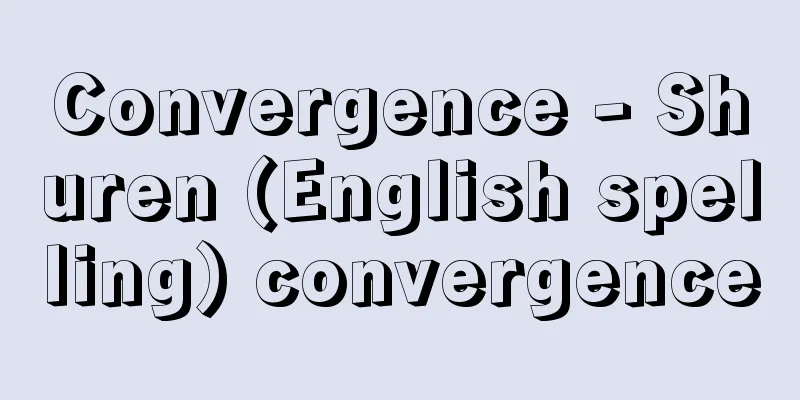

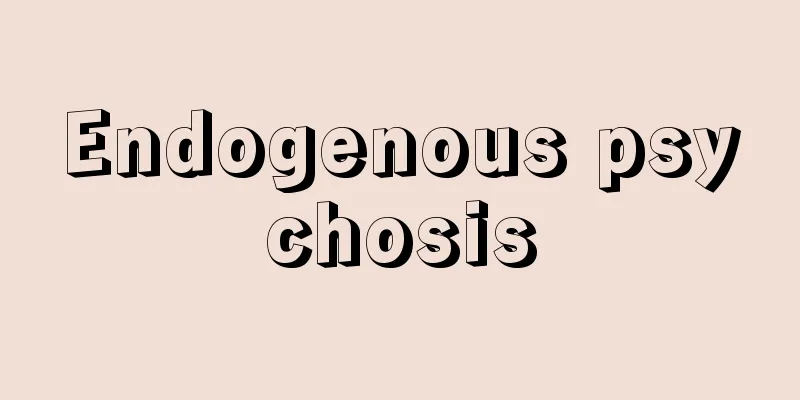

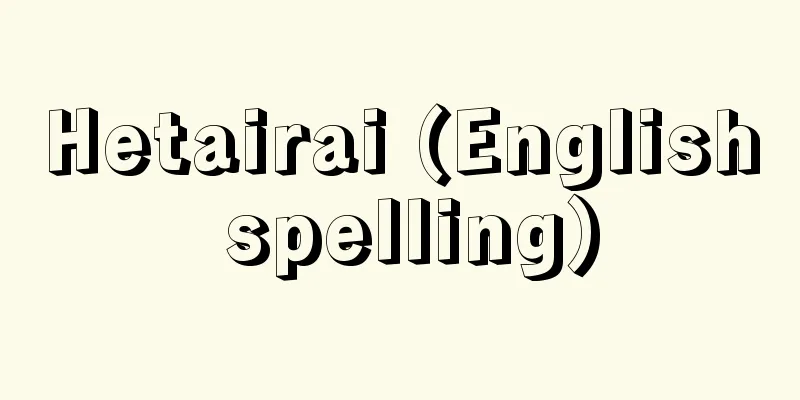
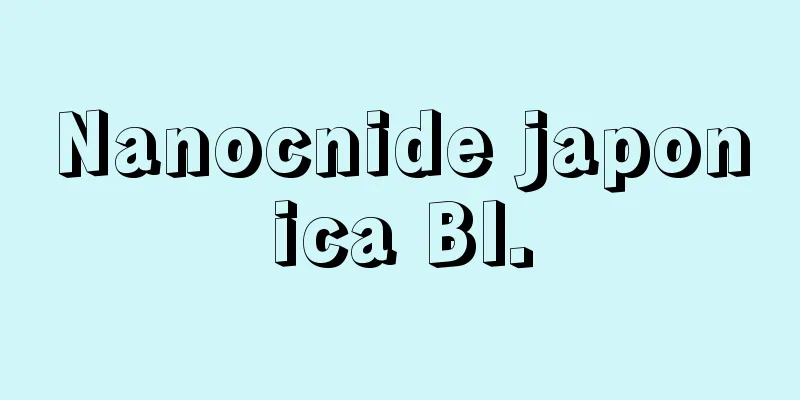

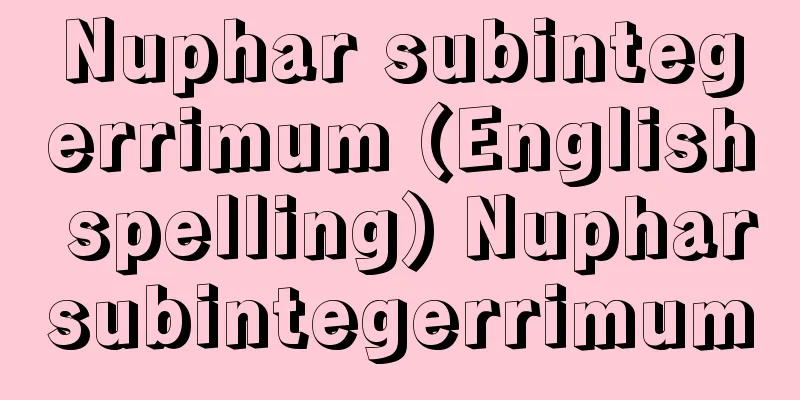
![Nyuzen [town] - Nyuzen](/upload/images/67cc7222ee2d7.webp)
